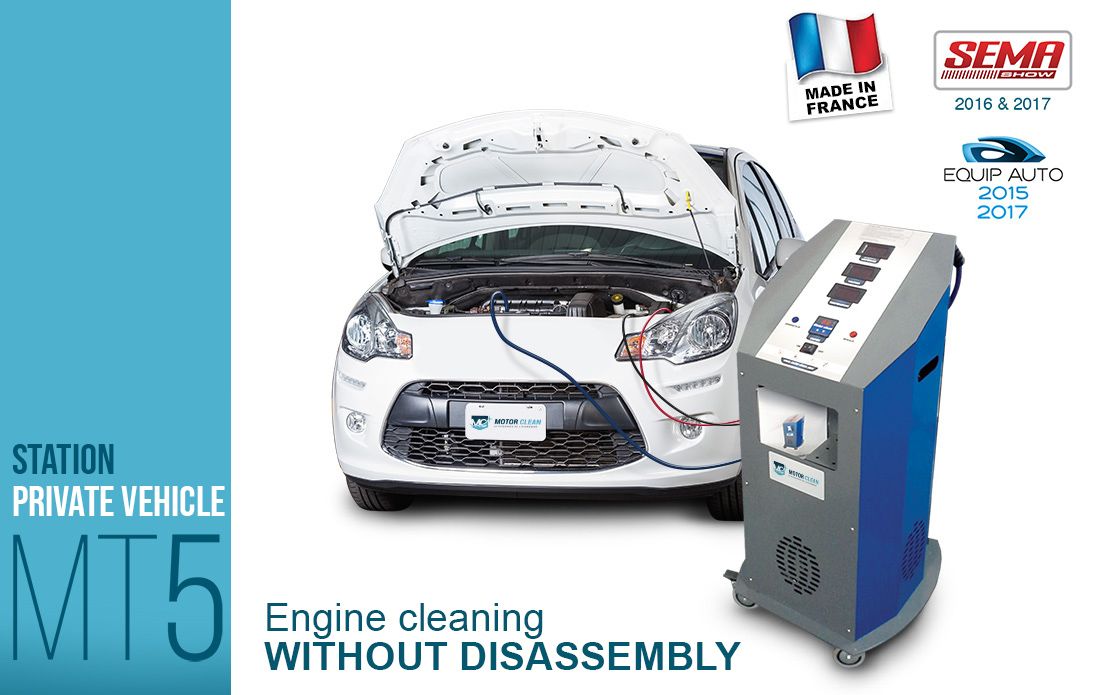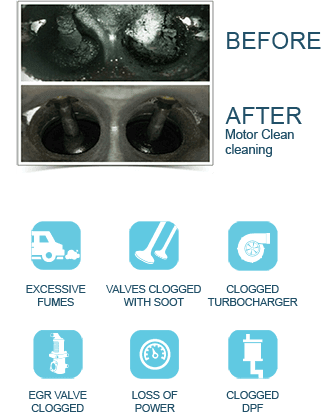Engine soot removal or internal engine cleaning is performed to restore your engine’s original performance.
It cleans the parts subjected to combustion, i.e.:
- Cylinders
- Pistons
- Valves
- Exhaust manifolds
- EGR (Exhaust Gas Recirculation) valves
- Turbochargers
- DPFs (Diesel Particulate Filter)
The hydrogen pulsed through the engine intake is mixed with the injected fuel. Hydrogen has a calorific capacity
3 times greater than liquid fuels such as gasoline or diesel and will increase the flammability of your original fuel.
This increase in flammability makes it possible
to burn all the fuel injected into the engine (an engine burns only 65% of its fuel; the remaining 35% is composed of:
- HC (hydrocarbon)
- CO (carbon monoxide)
- CO2 (carbon dioxide)
- O2 (oxygen)
- NOX (nitrogen oxide)
Pyrolysis effect By increasing the fuel’s flammability, the temperature of the exhaust gases increases, allowing the total combustion by pyrolysis of the soot particles deposited in the engine due to poor combustion of the injected fuel.









